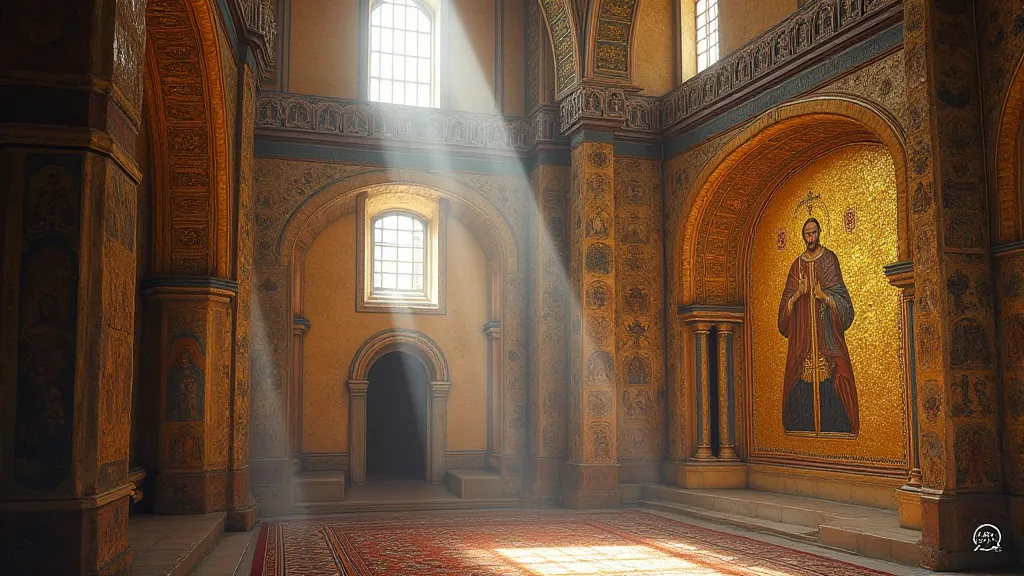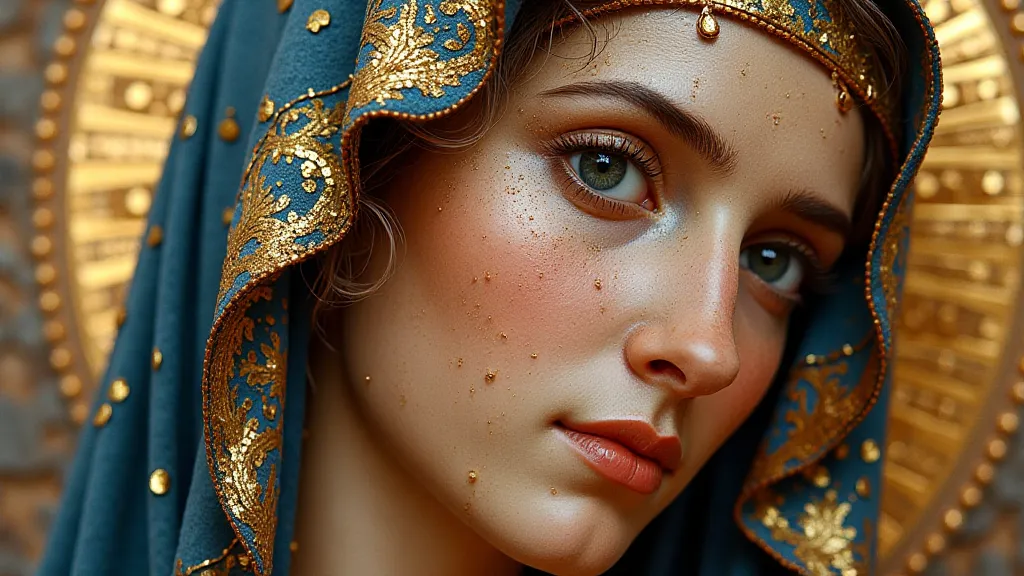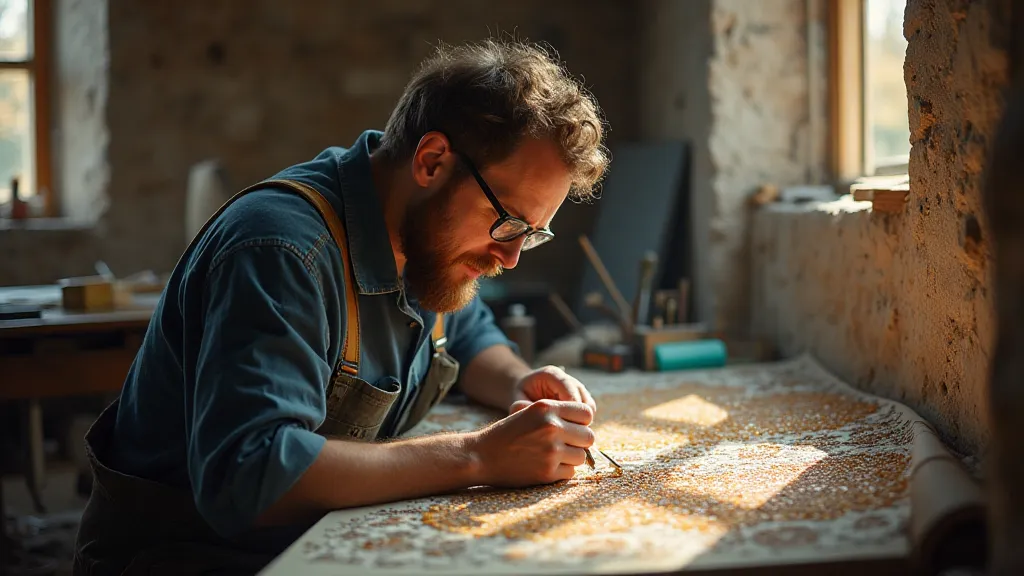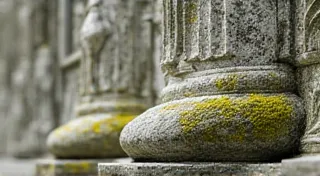The Frozen Symphony: How Byzantine Mosaics Captured Heavenly Light
The grandeur of Romanesque cathedrals, the elegance of Gothic spires – these architectural styles often dominate discussions of historical buildings. But tucked away within the annals of design history lies a style of profound beauty and spiritual depth: Byzantine architecture and, more specifically, its dazzling use of mosaics. It's a style that transcends mere decoration, acting as a frozen symphony of light, color, and unwavering faith.
For those unfamiliar, the Byzantine Empire, the eastern continuation of the Roman Empire, flourished for over a thousand years, leaving an indelible mark on art and architecture. From the 4th century CE until its fall in 1453, its capital, Constantinople (modern-day Istanbul), was a vibrant hub of culture and a nexus of trade between East and West. It was within this setting that Byzantine mosaics truly blossomed, evolving from simple patterns to the breathtaking masterpieces we admire today. The very layout of Constantinople and other Byzantine cities, influenced by considerations of defense, trade routes, and imperial power, demonstrates the careful planning inherent in the era, reminiscent of how the river's embrace shaped medieval urban planning across Europe.
The Dawn of Byzantine Light
Early Christian art was often expressed in frescoes – wall paintings applied directly to plaster. However, the Romans had a legacy of exquisite mosaic work, using small pieces of stone, glass, and other materials to create stunning visual displays. Byzantine artists, inheriting this knowledge, elevated the technique to unprecedented heights. The materials weren't just chosen for their beauty; they were selected for their ability to reflect and refract light. Smalti – opaque glass tesserae – were frequently used, often colored with metallic oxides to create shimmering, jewel-like hues that seemed to glow from within.
Imagine, if you will, the atmosphere within the Hagia Sophia in Constantinople. Newly constructed in the 6th century, its vast interior was illuminated by hundreds of windows and the shimmering light that bounced from countless gold and colored smalti. The effect wasn’t simply visually striking; it was intended to be spiritually transformative. The mosaics weren't meant to be “realistic” in the modern sense. They aimed to portray spiritual truths, to transport the viewer from the earthly realm to a vision of heaven.

A Craft of Masters and Patience
Creating a Byzantine mosaic was an arduous, painstaking process, demanding years of training and immense skill. The meticulous planning and consideration of acoustics within Byzantine structures also contributed to the overall experience, not unlike how the house of echoes resonates in historical buildings even today. The tesserae weren’t simply glued onto a surface; they were embedded in a thick layer of mortar, often made from lime and marble dust. Each piece had to be precisely cut, shaped, and placed, creating a surface that was both smooth and subtly textured. The angle at which each tessera was placed was crucial; it directly impacted how light would reflect and create the desired visual effect.
The artisans, known as mosaicists, were highly valued members of society, often working under the patronage of emperors or wealthy benefactors. Their work wasn’t just a profession; it was a vocation, a means of expressing their faith and contributing to the glory of God. The meticulous attention to detail, the dedication to perfection – these qualities are evident in every Byzantine mosaic that survives today. To truly appreciate the skill involved is to understand the sheer devotion put into each piece. The visual impact of these mosaics was carefully calculated, a deliberate attempt to awe and inspire, creating an immersive sensory experience akin to witnessing something otherworldly.
Symbolism Woven in Light and Color
Beyond the technical mastery, Byzantine mosaics are rich in symbolism. Gold wasn't merely used for its aesthetic appeal; it represented divine light, the uncreated radiance of God. Blue, often achieved through the use of cobalt, symbolized the heavens, the infinite expanse of the divine realm. Red, representing Christ’s sacrifice, and green, symbolizing hope and renewal, added further layers of meaning. The deliberate choices of materials and colours mirrored a broader cultural tendency to imbue even utilitarian structures with symbolic weight – a concept echoed in how colonial powers used architecture to project imperial authority, as seen in brick and bone constructions worldwide.
The figures depicted in these mosaics – Christ, the Virgin Mary, saints, and emperors – were presented in stylized forms, conveying a sense of otherworldliness and detachment from earthly concerns. Their elongated faces, large eyes, and serene expressions were designed to inspire awe and reverence. The narratives told through the mosaics—scenes from the Bible, the lives of the saints—were intended to educate and inspire the faithful. The visual impact of these narratives could be powerful, evoking a sense of solemnity and grandeur, similar to the effect produced by structures left to decay, where the very texture of crumbling walls tells a silent story - the cathedral of rust itself.

The Decline and Legacy
The decline of the Byzantine Empire brought about a gradual decline in the creation of mosaics. The fall of Constantinople in 1453 marked a turning point, and many mosaics were damaged or destroyed. However, the legacy of Byzantine mosaics endured, influencing art and architecture in other parts of the world. Venetian mosaic workshops adopted Byzantine techniques, and elements of Byzantine style can be found in churches and palaces across Europe.
The techniques employed – the painstaking selection of materials, the complex calculations of light and angle, the intricate arrangements of tesserae – were often closely guarded secrets, passed down through generations of skilled artisans. The very process of creating these artworks was steeped in ritual and tradition, contributing to their spiritual significance and ensuring the preservation of Byzantine artistic heritage.
A Collector's Perspective & Restoration Considerations
While authentic Byzantine mosaics are inaccessible to most collectors (and their fragmented remnants are often found in museum settings), understanding the techniques can inform appreciation for similar craftsmanship. Modern artists sometimes attempt to emulate the Byzantine style, though replicating the luminous quality achieved through centuries-old smalti and mortar is incredibly difficult. The challenge lies not just in replicating the visual appearance, but also in capturing the underlying spiritual essence – the sense of transcendence that permeates the original masterpieces.
For those interested in restoration or conservation, the fragility of these artworks highlights the importance of gentle handling and a deep understanding of materials science. Lime mortar, for example, requires specific conditions to cure properly, and improper restoration techniques can cause irreparable damage. The conservation of Byzantine mosaics is a field demanding specialist knowledge and meticulous care – far more than a simple cleaning can ever address. It’s a meticulous craft that demands a deep respect for the original materials and the artistic intent of the Byzantine masters.

The frozen symphony of Byzantine mosaics continues to resonate through time, a testament to the enduring power of faith, artistry, and the transformative potential of light. They remind us that beauty can be found in the most unexpected places and that even the most fragile artworks can speak volumes about the human spirit. The commitment to preserving these precious artifacts is vital, ensuring that future generations can marvel at the artistry and spiritual depth of Byzantine civilization. The challenges of preservation are significant, demanding a holistic approach that considers not only the physical materials but also the cultural context that gave rise to these magnificent works of art.





